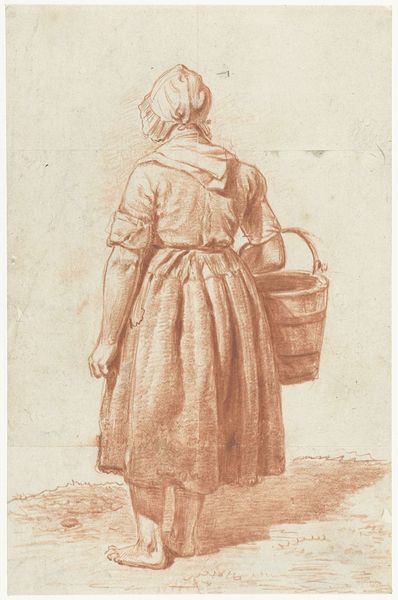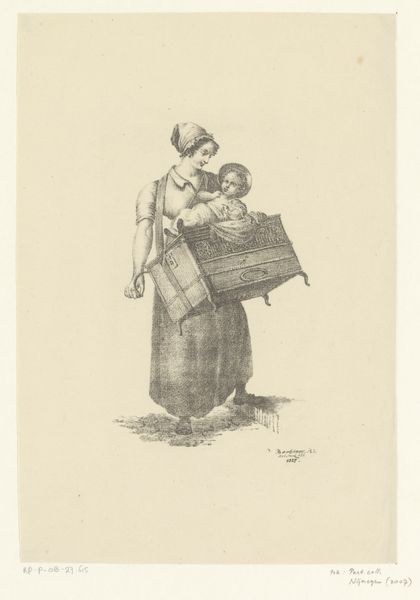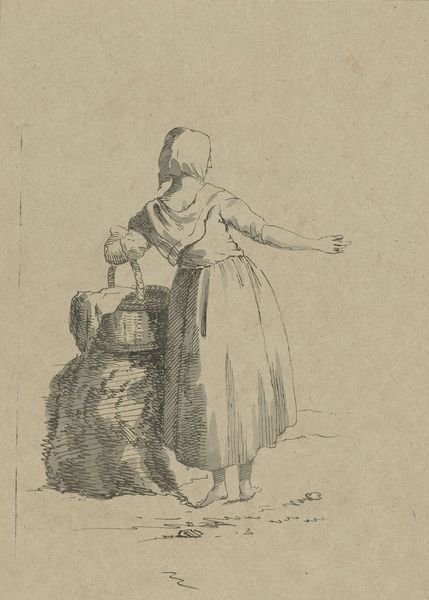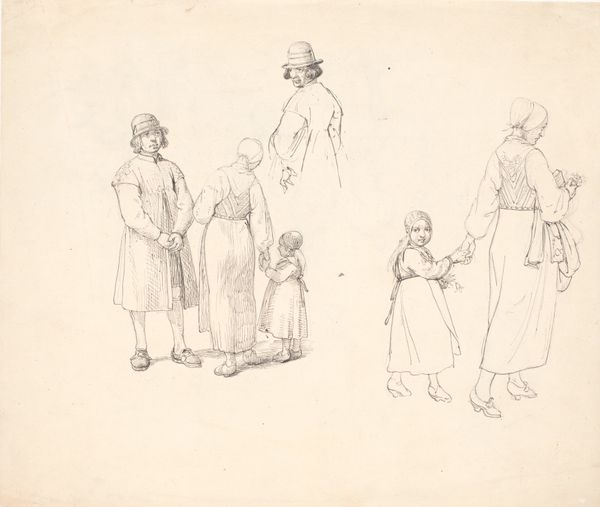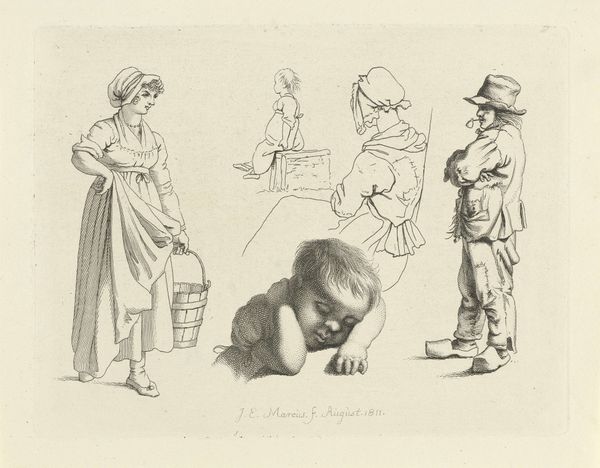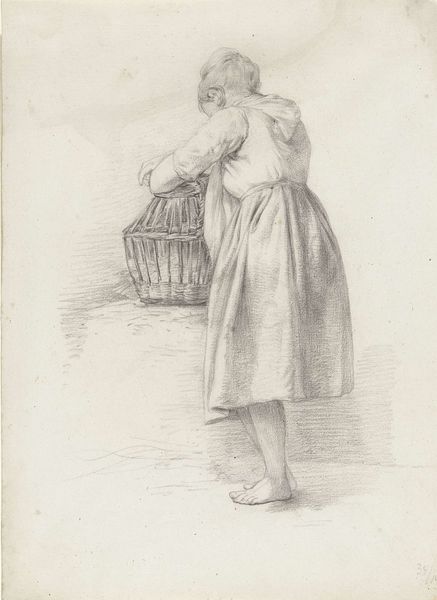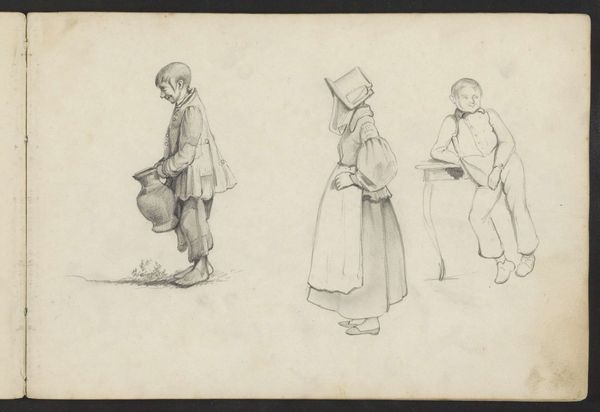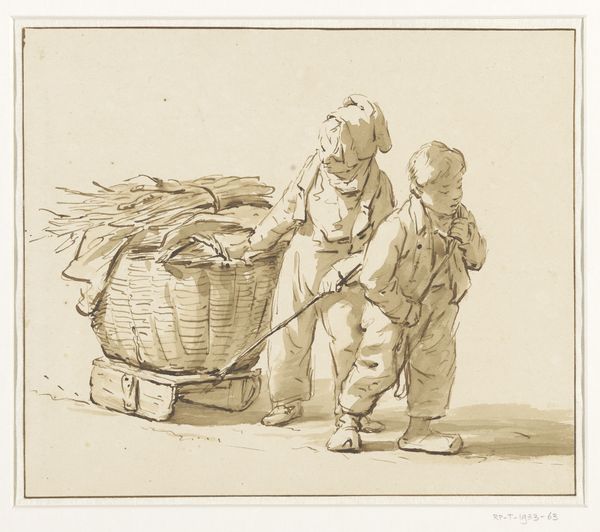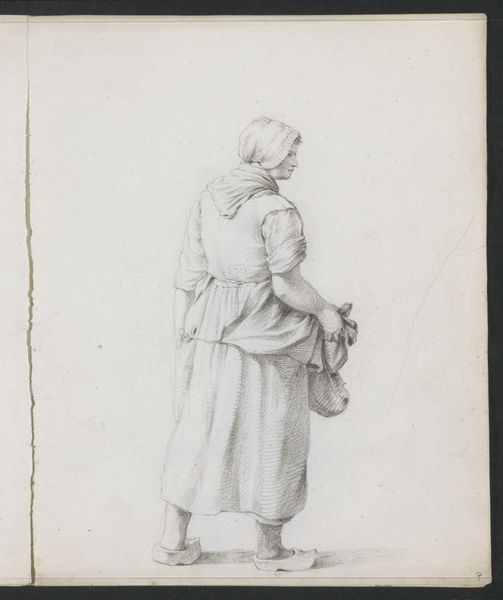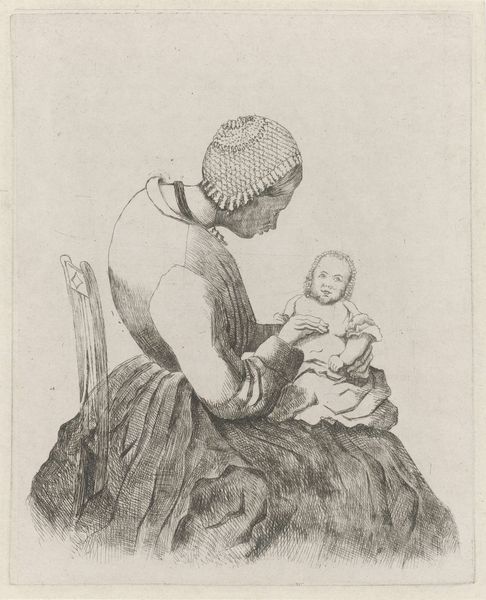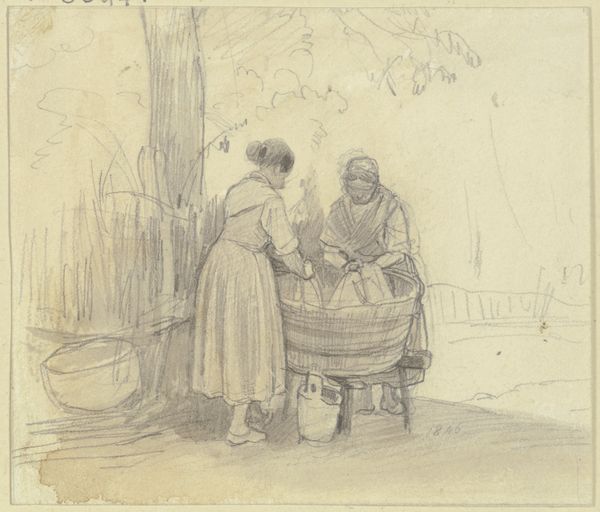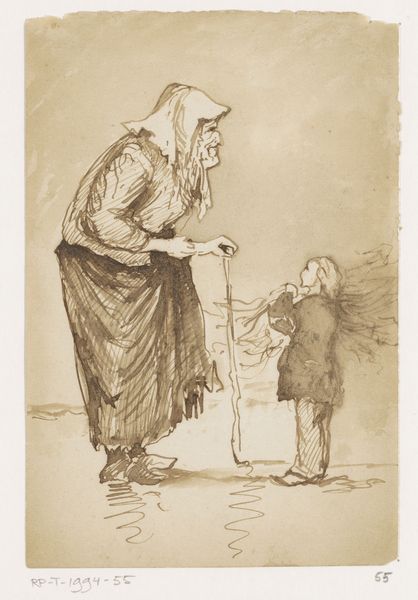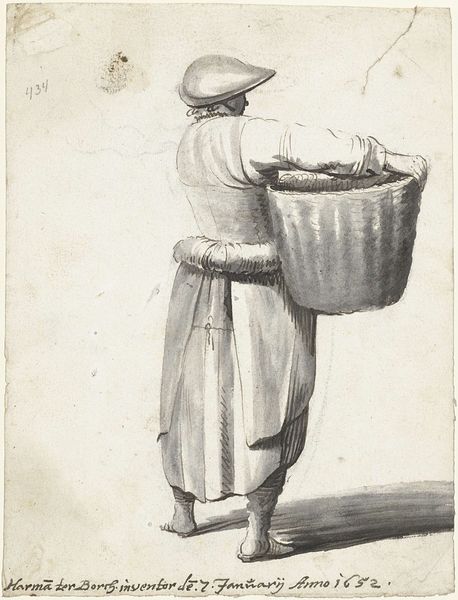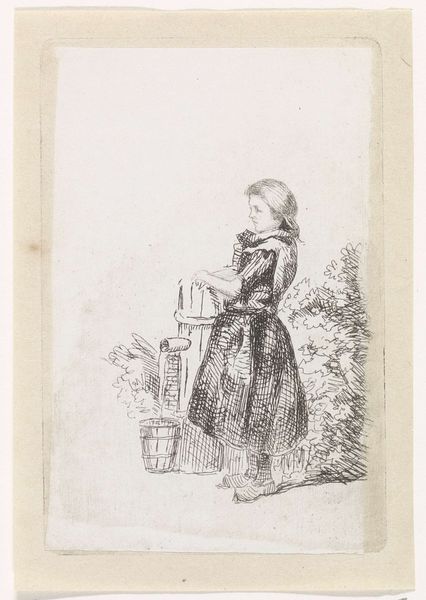
drawing, paper, ink, pencil, pen
#
portrait
#
drawing
#
pencil sketch
#
figuration
#
paper
#
ink
#
pencil drawing
#
romanticism
#
pencil
#
pen
#
genre-painting
Dimensions: height 224 mm, width 265 mm
Copyright: Rijks Museum: Open Domain
Editor: This piece is "Studies van een vissersvrouw," attributed to Abraham Johannes Ruytenschildt, possibly from 1815, rendered in pen, ink and pencil on paper. It strikes me as both intimate and detached. Two sketches of the same woman; one more detailed. What do you see in this piece? Curator: Well, considering this drawing through a historical lens, particularly its depiction of a fisherwoman, opens interesting avenues. In early 19th century art, portrayals of working-class individuals became more common, reflecting changing social and political awareness. It begs the question: What statement, if any, was the artist trying to make by depicting this woman? Was it intended as objective documentation, or were there social undertones related to the public perception of working women at the time? Editor: That's interesting. I hadn't considered the potential social commentary. It feels like a simple genre painting. Do you think the museum’s potential audience also would have considered a deeper meaning? Curator: Possibly, but that meaning would have been shaped by the socio-political climate and how this image interacted with other visual representations. Museums and galleries have historically played a key role in shaping these understandings by curating what is considered artistically valuable or culturally significant. Think of the politics of display. Do you notice anything specific about *how* she's depicted? Editor: I see that both figures are seen from the back or side; it’s not exactly a formal, flattering portrait. That pose creates a sense of anonymity, or perhaps observation from a distance. Curator: Exactly. The averted gaze distances her and highlights her role, almost making her a stand-in for the working class. Also, take into account how her figure conforms, or doesn't, to Romantic aesthetics which, at the time, emphasized idealization or dramatization. What we see instead seems almost anthropological in intent, wouldn’t you agree? Editor: Definitely. I see how analyzing its cultural and historical context offers a more nuanced interpretation. It really enriches the experience. Curator: Precisely. These works serve not just as beautiful images, but as historical artifacts, shaping our perspective of that period.
Comments
No comments
Be the first to comment and join the conversation on the ultimate creative platform.
